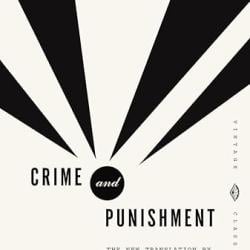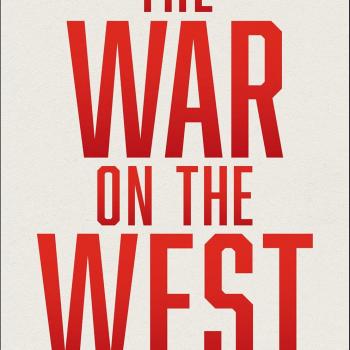We use “the elements of the world” to plant and grow churches whenever we don’t embrace our “flesh.” People construct communities using “the elements of the world” whenever they attempt to compensate for [human] weakness by displays of power, intelligence, bravery.

In Delivered from the Elements of the World, Leithart applies this insight to the church. What happens when we use “the elements of the world” to plant and build churches?
The “modern” missionary movement
First, note Leithart’s critique of contemporary Western culture since modernity:
We no longer erect settled boundaries between male and female, much less between slave and free, Jew and Gentile. We will tolerate no distinctions at all. I concede below that this is part of the story, but it is a superficial part. An exclusive focus on desacralization is blind to all the ways modernity brings a resacralization.
If the premise stated at the very outset of this book is right— the premise that has lurked around the corner of every period and paragraph, the premise that societies are inevitably, inescapably organized by purity and holiness and sacrifice— if that is true, then modernity’s claim to escape these habits and forms of life must be a diversion. I propose that we not go for the head fake. Keep your eye on the ball. (p. 261)
I can almost hear “Amens” from Louisville, Colorado Springs, and Dallas. However, Leithart is quick to redirect our gaze.
Because believers have the Holy Spirit, we easily forget the subtle ways “fleshiness” can influence our ministry methods and strategies. Much of the modern mission movement has been shaped by, well, modernity.
Leithart adds,
Systematizing is the heroism of ideas, an inverted expression of the weakness and vulnerability of flesh. Modern philosophy, systematizing to stave off the dangers of intellectual and cultural disorders, employs separations that resemble the holiness and purity separations of stoicheic [“elemental”] order. Reason is not to be contaminated by mere probable fact; philosophical language is not to be profaned by metaphor or poetry. Systematizing is the “civilizing process” applied to thought, the philosophical equivalent of not farting at a dinner party. (p. 262)
[For example…]
The arts, literature and music raise another thread of evidence: modern sacralizations. The distinction between “high” and “low” culture forms a sacred boundary that is also a social boundary. (p. 263)
When systematizing becomes a form of sacralization, Christians use “worldly elements” to expand God’s kingdom.

We must not forget––“flesh” is not inherently “bad” (cf. 2 Cor 10:3; Gal 2:20; Phil 1:22, 24 among others). Recall that Paul applies the label “elements of the world” to the Mosaic Law. Galatians 4:3, 9 says:
In the same way we also, when we were children, were enslaved to the elementary principles of the world…. But now that you have come to know God, or rather to be known by God, how can you turn back again to the weak and worthless elementary principles of the world, whose slaves you want to be once more?” (cf. 2:8, 10)
However, Paul the Law is spiritual, good, a delight (Rom 7:14, 16, 22, 25; 1 Tim 1:8), even something we should fulfill (Rom 13:8, 10; cf. Gal 5:14).
Likewise, various “elements” (στοιχεῖον) in the world are not inherently bad, so long as we use them in the right way (cf. 1 Tim 1:8).[1]
How “flesh” plants churches
Consider for example a few of distinctive values and characteristics of modernity, like efficiency, speed, empirical measurement, which result in the proficient use of techniques and systemization.
Are these also not the marks of the modern church growth and missionary movement?
Modernity entices us with the illusion that we can control the world through the mastery of technique (or “strategy”). To use Christian-speak, “if we will go to the edge of lostness, save people from every ethnic group, we could hasten Christ’s return.” Sound at all familiar?
Accordingly, modern mission organizations are enticed by the apparent simplicity of methodologies that treat church planting and evangelism like a manufacturing process. If we could somehow tweak the “assembly line,” more people would be saved in less time.
“Time is money” is replaced with “Lost time is souls lost.”

The typical missionary is keenly aware of his or her limitations as well as the formidable challenges they face. They exist within missionary subculture, which has its own worldly “elements.” The genuine desire to see people know Christ is combined with a natural desire to be acceptable within the community.
Therefore, missionaries uncritically adopt assumptions and methods typical of modernity, not Christianity (although they’ll cite Scripture as support).
What kind of churches emerge from this amalgamation of Christianity and modernity? Missionaries and pastors plant modern churches.
They might plant genuine Christian communities, but the DNA is corrupted by the elements of the modern world. Symptoms include thinking that biblical “fruit” primarily consists in what can be counted. In fact, you can’t put numbers to love, joy, peace, patience, kindness, goodness, faithfulness, gentleness, self-control.
One application of Leithart’s work is this:
We need to give far more consideration to the “elements” that will sustain our churches. Church planting and evangelism require more than just doctrine.
Here are a few questions for reflection:
- What are habits, values, customs, and boundaries that shape the church’s collective identity?
- How should that vision reorient how we train and lead others?
- What are implications for contextualization? How might the “elements” change with culture?
[1] “Now we know that the law is good, if one uses it lawfully” (1 Tim 1:8)













